History often repeats itself. This well known fact is often confirmed in tank building. For instance, Soviet SPGs, especially heavy ones like the SU-14, were created in order to mechanize artillery. The requirements changed during the process of their creation. The Red Army was in need of an assault gun that was capable of direct fire and had shell-proof armour. The 212 SPG and subsequent vehicles were designed according to this concept. Work resulted in the creation of the SU-152. However, one day the Red Army once more found itself in need of a self propelled gun with an open fighting compartment equipped with a 203 mm B-4 gun.
From initiatives to technical requirements
Work on heavy SPGs in the USSR in 1941-42 was chiefly directed at creating assault guns that fired directly at their target. There were, however, unusual projects in early 1942. The design bureau of factory #221 presented projects of BR-33P and BR-33G SPGs in March of 1942. These SPGs were based on T-34 components. According to the project, the BR-33P would be armed with a 152 mm Br-2 gun and the BR-33G would be armed with a 203 mm B-4 howitzer. Since these projects were developed chiefly to mechanize high power artillery, they were not greenlit. The army needed «bunker busters», but artillery design bureaus continued to submit similar designs.
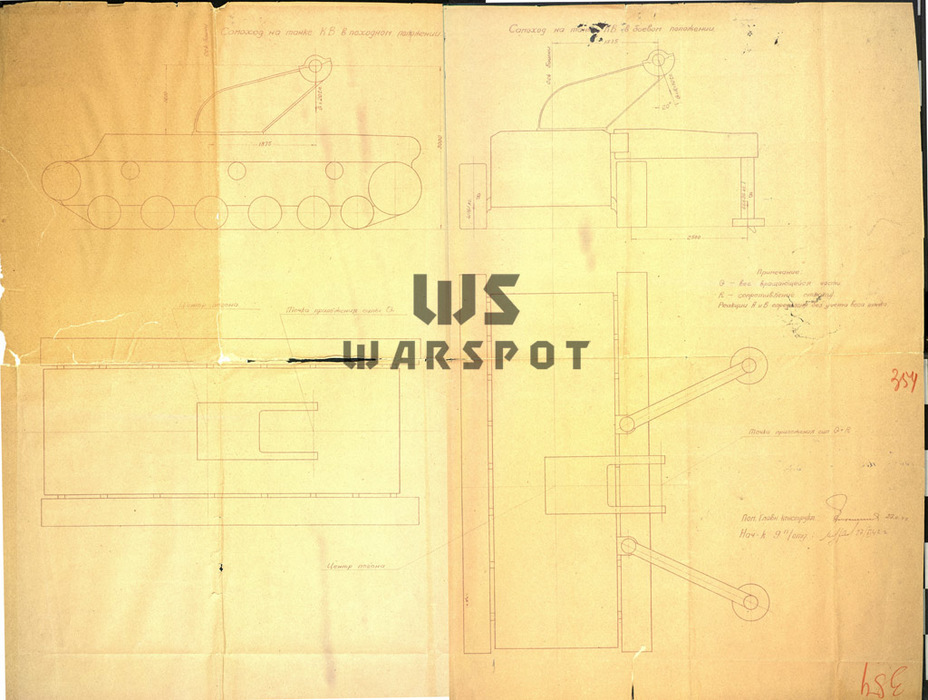
The most powerful of these projects appeared in the fall of 1942. The installation of a 400 mm mortar on either a T-34 or KV-1 chassis was developed under the direction of P.F. Murefyev at factory #92. It is not known what weapon was meant for installation. The recipe for production was simple: the turret was removed from the tank and the mortar was installed instead. Trails that were deployed when the vehicle was brought into firing mode were also included. A proposal was made in late November of 1942 to use the KV-1S chassis instead of the KV-1.
The mortar and trails would have made the tank 20 tons heavier. With the turret, gun, and ammunition removed, the total weight would have been 55 tons. The designers at factory #92 were mistaken: they expected the KV-1S to weigh 37 tons and not 42. On December 14th, 1942, the Main Artillery Directorate (GAU) of the Red Army responded to the request made by factory #92 director A.S. Elyan:
«Experience in using KV tanks showed that the engine and running gear are overloaded at 50 tons and work with great difficulty, often breaking. This issue forced us to create the lighter KV-1S tank that weighs 42.5 tons.
The engine power, location and toughness of running gear and hull elements did not change significantly compared to those used on the KV-1.
It is not known whether or not the suspension will handle a recoil of 100 tons, as no experience with artillery that delivers such stress has been obtained.
A lack of characteristics for the mortar makes it impossible to determine whether or not it makes sense to install it into a tank.»
This was the end of the superheavy self propelled mortar.
The idea of a self propelled gun carriage on a KV-1S chassis came up again in the spring of 1943, this time as a set of technical requirements. It is not known who specifically issued it and when. The first known mention of this project is made in a GAU report dated April 28th, 1943. Item 12 described a «203 mm self propelled howitzer on the KV-1S chassis». Two factories were working on this project: the Kirov Factory in Chelyabinsk (ChKZ) and factory #172 in Molotov (modern day Perm). No information about the ChKZ project remains, it is only known that data regarding the ammunition and oscillating parts of the B-4 and Br-2 cannons were sent to SKB-2 on June 19th, 1943. Work stalled after that. The story continues only at factory #172.
Going their own way
The story of the «203 mm self propelled howitzer on the KV-1S chassis» at factory #172 is an interesting one. Instead of a semi-enclosed fighting compartment, the factory developed a fully enclosed M-17 assault gun. Instead of a B-4, it was armed with the M-40 howitzer. This project was approved by the Self Propelled Artillery Directorate (USA) of the GBTU, but rejected by the artillery branch. The Artillery Committee of the GAU made the following verdict on July 26th, 1943:
«1. The 203 mm M-17 self propelled howitzer has no advantages over the existing SU-152 self propelled gun-howitzer in terms of firepower or effectiveness of the projectile.
2. The GAU Artillery Committee considers production of the experimental 203 mm M-17 self propelled howitzer or further work on this project senseless.
3. The GAU Artillery Committee considers it necessary to propose the development of a self propelled B-4 203 mm model 1931 howitzer (with the possibility of installing a Br-2 152 mm model 1935 gun) to factory #172. The project should not have thick all-round armour, but only a light gun shield. Increase the elevation angle to 60-70 degrees. THe overall mass of the vehicle should not exceed the mass of the SU-152 self propelled gun-howitzer: 45 tons.»
Factory #172 submitted no proposals for this work in either July, August, or even September. Activity was only shown when the Central Artillery Design Bureau (TsAKB) received similar instructions in September of 1943. Work on a semi-enclosed SPG at factory #172 gave its first results in early October.
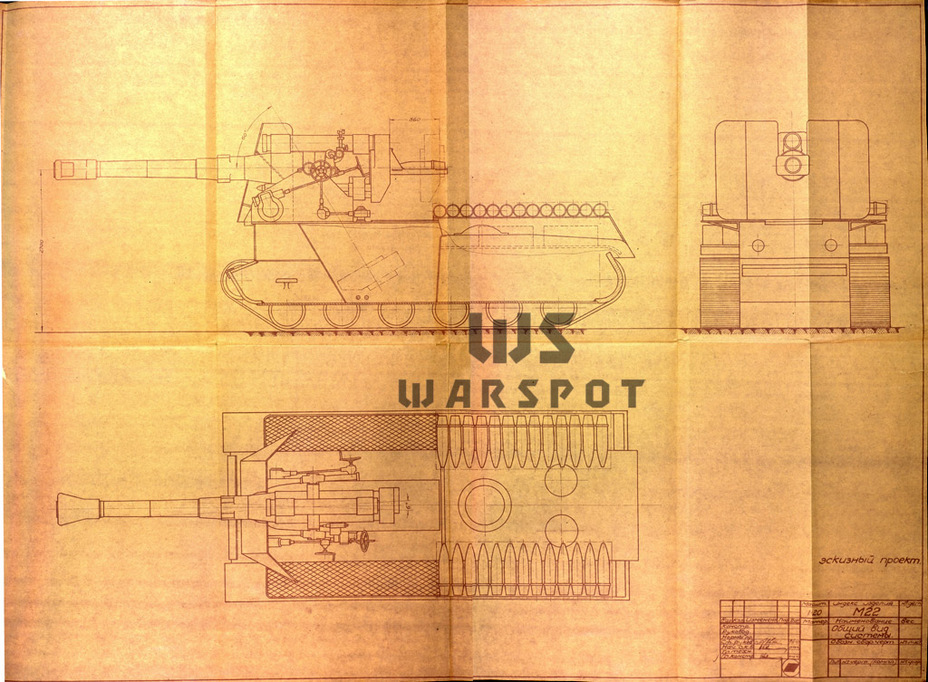
The project developed under the direction of the chief of the artillery design bureau at factory #172, V.A. Ilyin, was indexed M22. According to the accompanying memo, the vehicle was designed on the KV-14 (SU-152) chassis, but nearly nothing remained of the original vehicle. The KV-1S was used in practice, sans the turret and turret ring. A platform was instead installed atop the fighting compartment, which then housed the oscillating part of the B-4 special power 203 mm howitzer. A massive gun shield covered the gun from the front. Since the howitzer was placed low, the bore axis height was not great, only 2700 mm. The fighting compartment had a special dip in it to accommodate the recoiling barrel at angles of elevation up to 60 degrees.
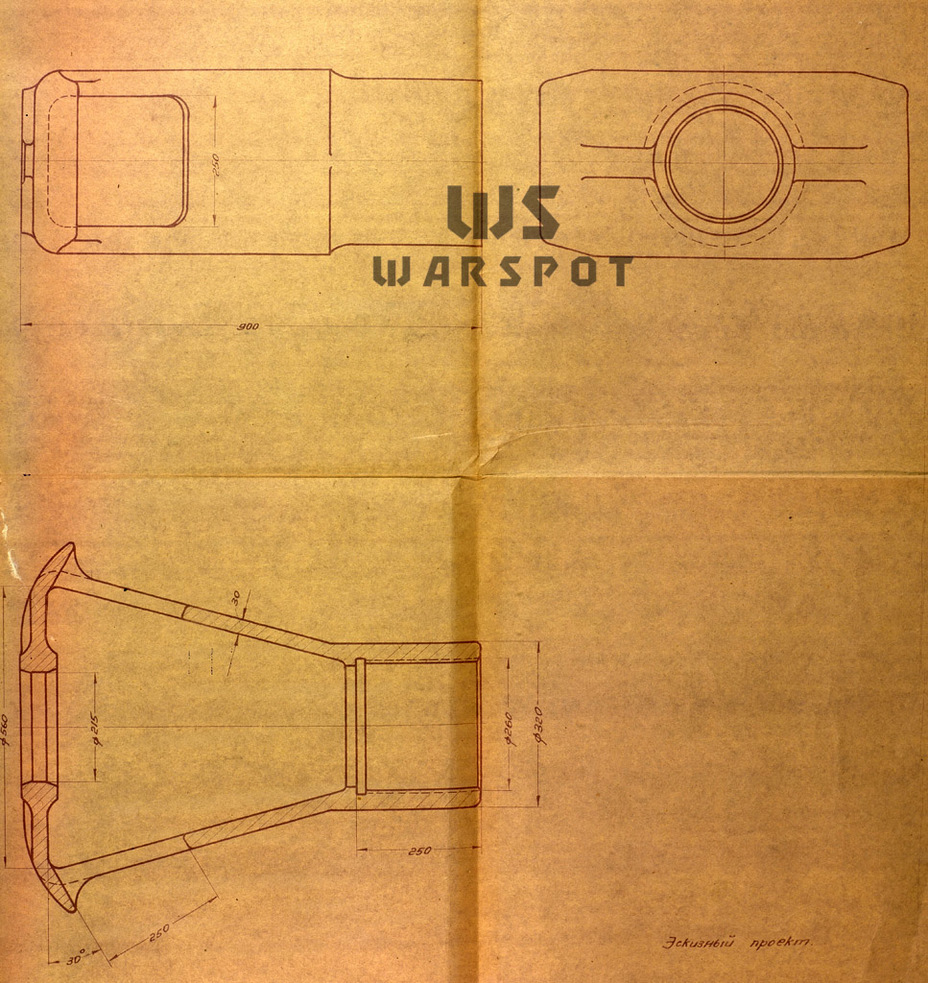
The gun would have to be converted for installation. The B-4 would receive a massive muzzle brake, but this was not likely to cause problems: the M22 was designed for indirect fire. The ammunition rack would fit 26 rounds. It was placed on top of the engine compartment to make loading easier. The fighting compartment had nearly no protection. The estimated mass of the M22 was 43 tons, giving it approximately the same mobility as the KV-1S.
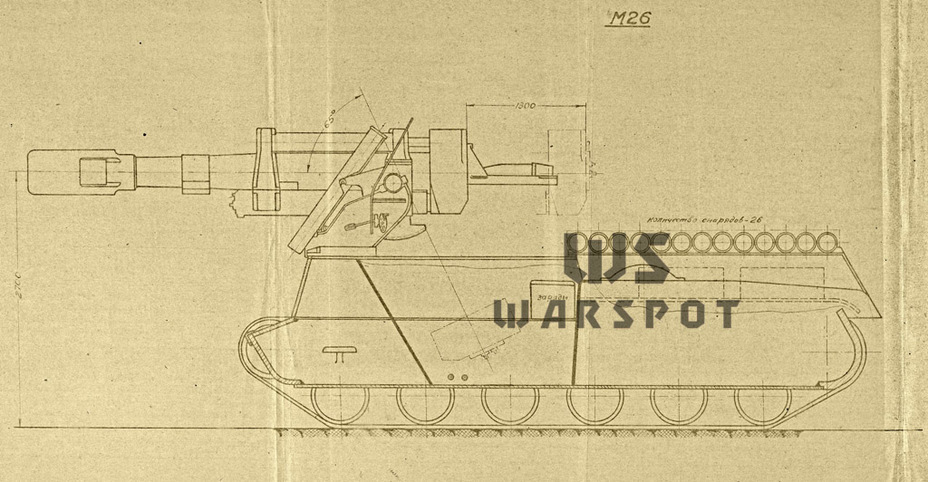
The project was a day late and a penny short. If factory #172 had submitted the project on time, instead of on October 15th, 1943, it could have a chance at life. In reality, the project arrived exactly a month after the demonstration of an equivalent project by the TsAKB. The M22 seemed excessive. The NKV Technical Council instructed that work on the M22 should be stopped.
The factory #172 design bureau did not give up. A design of a 203 mm M24 gun developed by A.Ya. Drozdov was sent to the GAU Artillery Committee on November 27th, 1943. This was a combination of a barrel with the ballistics of the 203 mm B-4 on the carriage of the 152 mm ML-20 gun-howitzer. The design bureau also proposed the installation of a 280 mm Br-5 mortar barrel on the same mount (this variant was indexed M25). The SPG was mentioned at the end of the attached memo:
«The oscillating part of both the M24 system and the proposed alternative variants are well suited for installation on a self propelled chassis. As an illustration of this, we are attaching a draft of an SPG with the oscillating part of the M24 gun system based on the chassis of the KV-1S or KV-14 tank.»
The variant of the M22 with the M24 gun was indexed M26. The variant with the M25 gun was indexed M27. Either the KV-1S or IS tank could be used for the chassis. The only difference between the M26 and M22 was a new gun and a smaller gun shield. The project also allowed for installation of a barrel from the 152 mm Br-2 gun on the same carriage. This was the 152 mm M23 gun that was being developed at the same time.
The Artillery Committee reviewed the M24 project on December 15th. A decision was made to build it in metal. The variant with a 280 mm Br-5 mortar was rejected. The M26 and M27 were not even mentioned. Factory #172's self propelled howitzer finally died.
Crushed between the GBTU and GAU
Factory #172 was dragging its feet on the development of a semi-enclosed heavy SPG, but a competitor appeared in September of 1943: V.G. Grabin's TsAKB. This design bureau occupied the space formerly used by factory #8 and was staffed by many former employees of factory #92. There were many talented engineers and designers here, some of which already had experience with self propelled artillery. As a result, materials on the BR-33P and BR-33G were transferred here on the TsAKB's request. Grabin's group presented its first draft of a semi-enclosed SPG on September 15th, 1943.
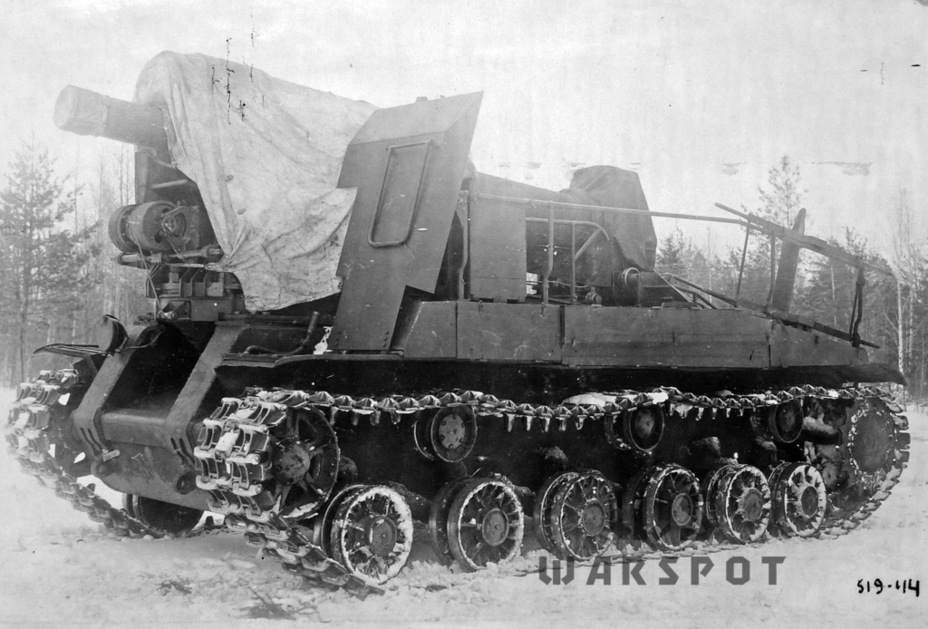
The lines that directed development were blurred. The designers worked with guns without having precise requirements, and the overall objective was very vague. Because of this, the TsAKB considered several variants for its SPG. The situation did not change in October: the decision to bring the TsAKB's project to life was not accompanied by concrete requirements. The Artillery Committee only finally developed tactical-technical requirements for a «Self propelled Artillery of the Reserve of the Supreme Command 152 and 203 mm guns» on November 16th. According to the requirements, the vertical traverse of the gun ranged from −3 to +65 degrees, the horizontal traverse covered 60 degrees. At least 12 rounds had to be carried on board with a rate of fire of 2-3 RPM for the Br-2 and 1-2 RPM for the B-4. The mass of the SPG was estimated at 45-48 tons.
Folding ladders were permitted to make it easier to operate the SPG. Deployable trails were also permitted.
It was clear that the KV-1S and SU-152 were on their way out in October of 1943, and the TsAKB changed its requirements for the chassis. In addition to two KV-1S and one SU-152, the TsAKB asked for one sample of an IS tank and blueprints for it. Later, the requirements changed again: Grabin asked to replace one KV-1S with a KV-85. This tank was used to test the 100 mm S-34 gun.
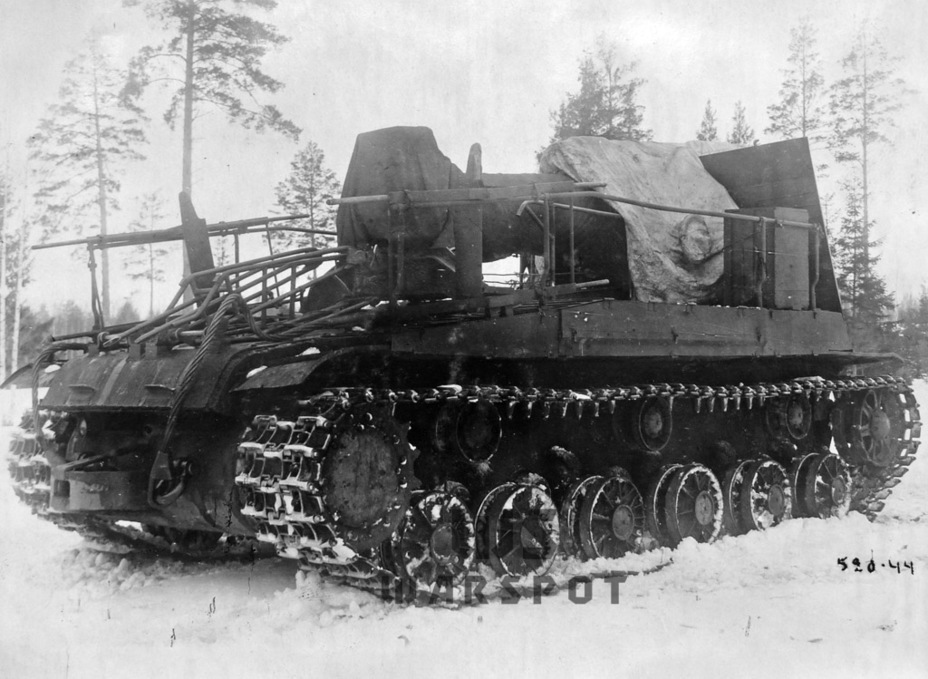
Assembly of the SPG indexed S-51 began in January of 1944. The TsAKB had to make a difficult choice during development. In theory, the KV-1S chassis needed to be lengthened and extra road wheels added to accommodate the B-4 howitzer, but the development of a special chassis spelled doom for the project in wartime. The TsAKB made the decision to not introduce any changes into the chassis. A platform was built on their repaired KV-1S that fit a portion of the crew in battle position. The platform was hollow, which was taken advantage of in order to store toolkits. Railings were added to prevent accidents. The majority of ammunition was carried in wooden crates, which were carried on the platform and fixed to the railings during travel.
Folding ladders were added to the rear of the SPG to make getting on and off easier. Rails for the ammunition tray were fitted between them. The tray was needed to load the SPG from the ground. A portion of the 10-person crew was located on the ground during the SPG's operation.
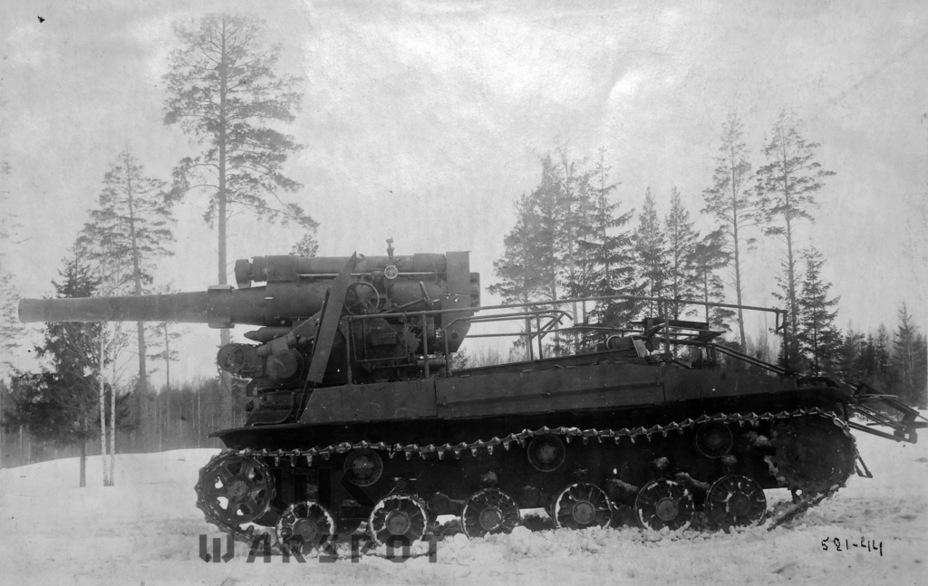
The oscillating part of the B-4 203 mm howitzer was taken without changes. The gun was brought far forward, with the foundation of the carriage hanging over the driver's compartment. The barrel was artificially recoiled during travel. The gun was installed on a special frame, which partially obstructed the driver's view.
Initially, the system had no gun shield. A 7 mm thick shield to protect the crew from shrapnel was later installed. The shield consisted of two parts, which were flipped forward during the transition from travel to battle mode to make bringing the gun to readiness easier. The shield rested against special braces on the running gear.
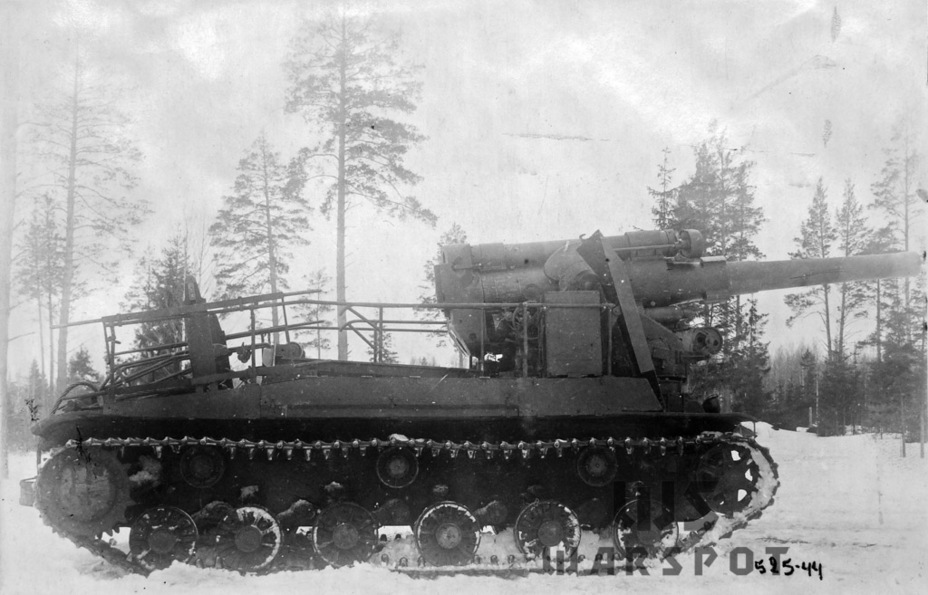
Factory trials of the S-51 took place in February of 1944. 49 shots were fired in all. The rate of fire increased by 30% compared to the towed B-4 gun. The idea of building another SPG was brought up after the trials. This SPG was indexed S-59, and the only difference from the S-51 was the use of the 152 mm Br-2 special power gun.
The S-51 was slightly altered after trials, after which it was sent to the Gorohovets ANIOP. The vehicle arrived on February 26th, but trials began much later, on March 16th. Since the proving grounds did not have the necessary equipment, disassembly and measurement of parts was performed at factory #112. The SPG was not disassembled completely. The S-51 already travelled for 150 km before trials began, of which 120 were spent to drive to factory #112 and back.
It was presumed that the S-51 would fire HE ammunition during trials, but it was not available, and concrete piercing shells were used. 209 rounds were made, 135 of which were supercharged, until the end of the trials on March 24th.
The SPG recoiled backwards by 1000-1300 mm when firing at an elevation of 30 degrees, returning forward only by 200 mm. The front of the SPG raised up by 250-450 mm, and the rear dipped by 200-300 mm. The right side jumped by 100 mm less than the left.
When firing at an elevation of 45 degrees, the recoil was 750-1000 mm long, the return was 300 mm, the front jumped up by 100-180 mm, and the rear dipped by 120-140 mm. At 57 degrees the recoil was 400-750 mm, the return was 300 mm, the front raised by 60-150 mm and the rear dipped by 50-100 mm.
The stability of the S-51 was deemed unsatisfactory. The calibration of the sight also drifted during firing.

Mobility trials took place from March 25th to April 4th. The SPG was tested in various conditions. Up to 200 mm of snow covered the road. The S-51 drove or a total of 524 km, including 16 km on a cobblestone road and 40 km off-road. The majority of the trials took place on a paved highway thanks to trips to factory #112. The top speed on a road was 32 kph and the top speed off-road was 22 kph. Special trials were not performed due to issues with the running gear. The right final drive and brake band broke at the 240th kilometer, issues cropped up again at the 360th kilometer. There were issues with the tracks and the hub cap bolts on the road wheels failed. No issues were detected with the torsion bars or the engine.
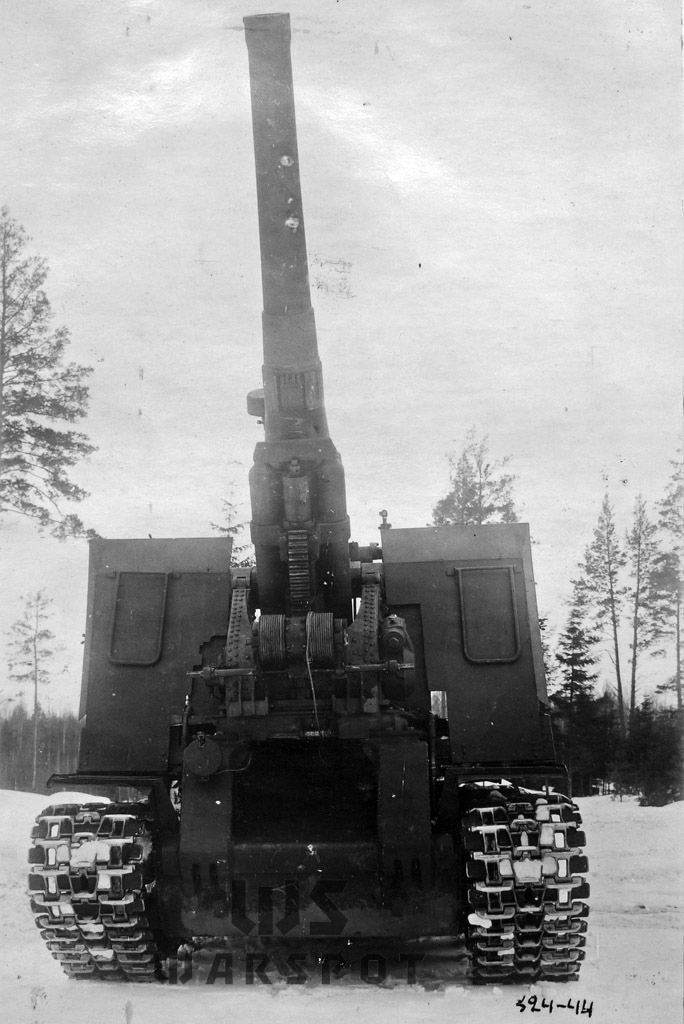
The ANIOP commission concluded that the S-51 passed trials. However, there were issues with it. Due to the shifting of the gun while firing, the dispersion of its shots was high. Low stability also led to the aim being upset as the vehicle shifted backwards. A proposal was made to solve this problem with trails. Nevertheless, the success of the trials allowed Grabin to discuss mass production. At first, only a batch of 20-30 vehicles was discussed. The Self Propelled Guns Directorate reacted negatively to this. They did not consider the use of the KV-1S chassis to develop a heavy SPG with a light gun shield as rational. The mass of the S-51 also climbed to 50 tons, and KV-1 tanks with this mass showed issues with the drivetrain in early 1942, which was still fresh in the army's mind. A decision was made to perform additional trials, but they never too place, as the chassis required refurbishment after the trials.
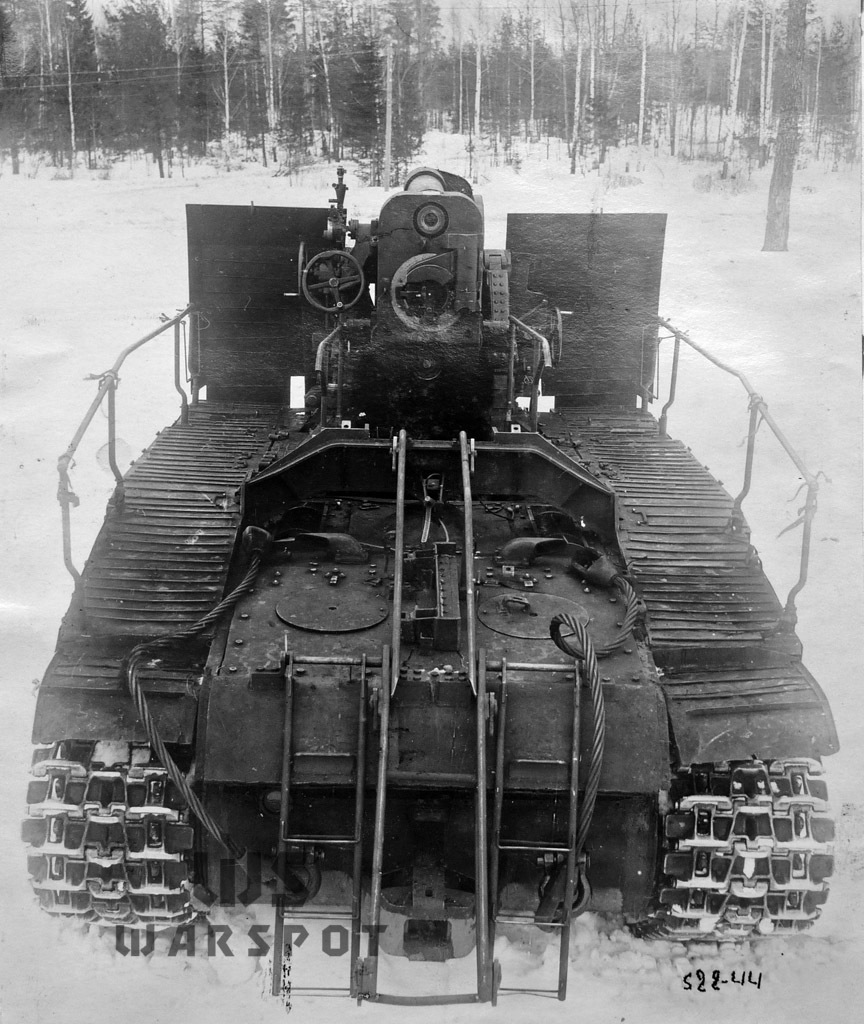
The GAU tried to get the process moving again in the summer of 1944. Artillery Committee chair Lieutenant General Hohlov sent General Yakovlev his ideas about the use of the SPG in combat. He attached a draft GKO (State Committee of Defense) decree to accept the S-51 into service under the name B-5-S51. Production of 50 SPGs was proposed, 20 of them by August 20th. Refurbished KV-1S chassis would be used.
The issue was that this amount of KV-1S chassis could not be obtained. Both the GAU and the GABTU had other issues with the S-51. A meeting was held in late July of 1944 with Malyshev (representing the NKTP), Ustinov (NKV), Fedorenko (GBTU), and Yakovlev (GAU). Malyshev and Fedorenko spoke out against putting the S-51 into production, insisting that the SPG was overloaded and would not survive long term usage.
This did not stop the TsAKB from building an experimental prototype of the S-59. The vehicle used the chassis of a refurbished KV-1S with the hull serial number 30164 and engine serial number 309512, delivered by repair factory #1 on October 29th, 1943. There were few changes from the S-51, as the Br-2 and B-4 carriages were identical. The S-59 was approved for proving grounds trials in late August of 1944, but this changed nothing.
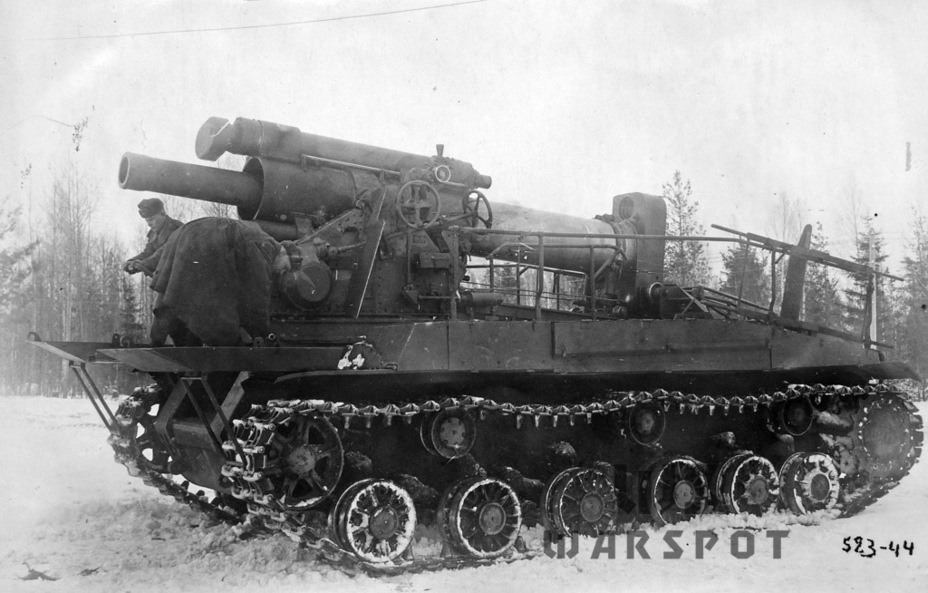
The problematic chassis of the S-51 could still be replaced. The Artillery Committee chair approved tactical technical requirements for a «203 mm self propelled howitzer and 152 mm self propelled gun on the chassis of the IS heavy tank» on August 14th. The SPG would be equipped with a DShK machine gun turret (carrying 1000 rounds of ammunition) for self defense. The crew was also armed with two DP machine guns (2520 rounds of ammunition), four PPSh submachine guns (4000 rounds), and 25 F-1 grenades. The crew increased to 10 men and the ammunition capacity from 12 to 15 rounds for the B-4 and 25 rounds for the Br-2.
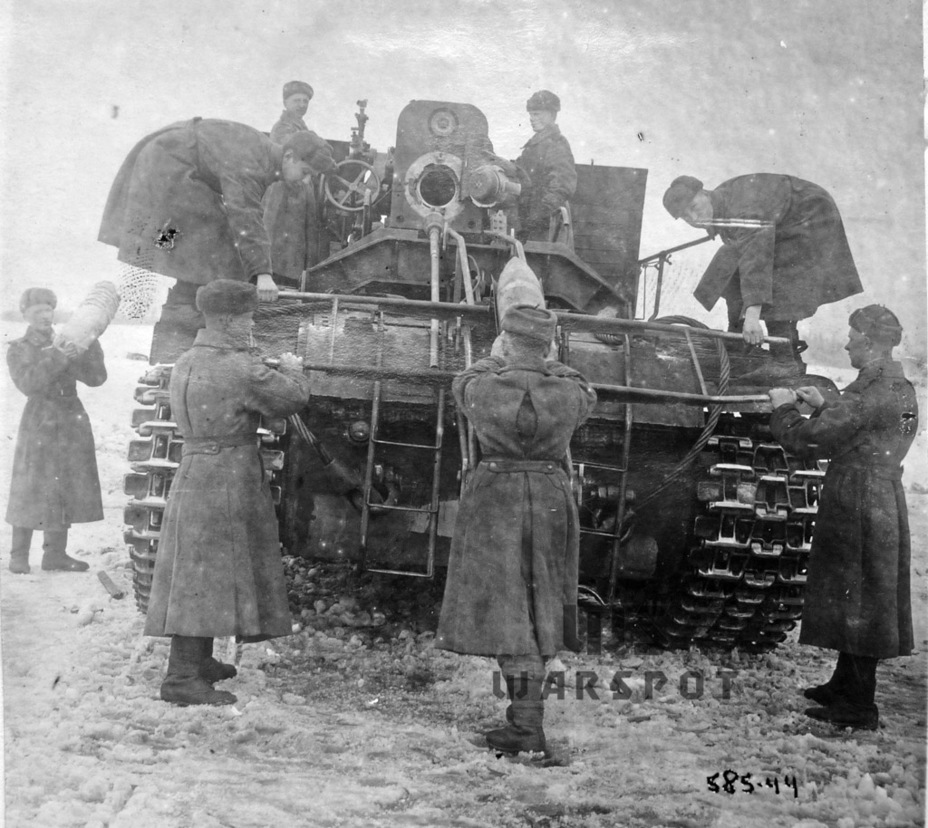
Work on a semi-enclosed SPG on the IS tank chassis continued into the fall of 1944. GAU chief Yakovlev wrote Beria a report on late September, asking for reconsideration of the issue of producing the improved S-51. A draft GKO decree was attached to the letter, proposing the production of 20 vehicles: 5 in October and 15 in November.
This time, the idea was not even developed into a project. The TsAKB met the idea of building an S-51 analogue on the IS chassis with little enthusiasm. Deputy chief designer of the TsAKB K.K. Renne wrote a letter to Hohlov and Satel, stating that the development of yet another project without concrete requirements is senseless. The TsAKB insisted on the production of an SPG on the KV-1S chassis. Meanwhile, the NKTP and GBTU maintained that even the IS chassis would be overloaded and that a heavy SPG needs a special chassis. This meant the end of the S-51.
The situation with the S-51 is reminiscent of Krylov's famous fable «Swan, Pike and Crawfish», where each animal pulled their cart in a different direction. It is not surprising that the S-51 project on the IS chassis died before being born. Soviet artillerymen had to repeat their experience from Finland, bringing the towed B-4 in for direct fire.
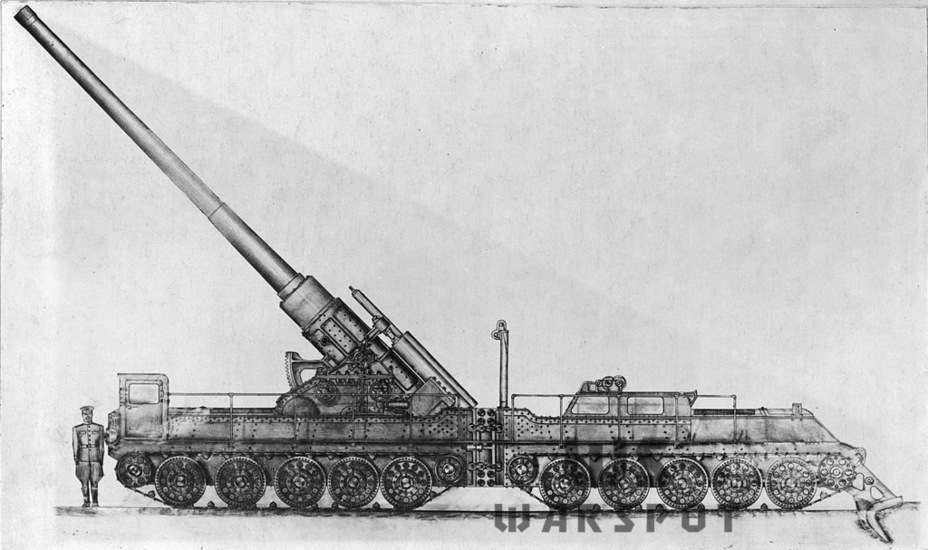
Finally, let us mention another project, this time one that used the T-34 chassis. This monster was developed at the Leningrad branch of the TsAKB in the summer of 1944. Either the 210 mm Br-17 gun or 305 mm Br-18 howitzer were installed on two joined T-34 chassis. The crew was placed in a cabin in the front of the leading T-34. This project was developed as an alternative for the S-51. People's Commissar of Armaments Ustinov proposed composing tactical-technical requirements for such a vehicle, but work did not progress past a draft.
Tracked heavy SPGs designed for similar applications only appeared more than a decade later. They were also designed in Leningrad. These were the 406 mm 2A3 Kondensator self propelled howitzer and 420 mm 2B1 Oka self propelled mortar. They were based on a converted T-10 heavy tank chassis.
Translated by Peter Samsonov. Read more interesting tank articles on his blog Tank Archives.
Sources:
- Central Archives of the Russian Ministry of Defence.






